1. Communications Plan
1.1. Schedule
1.1.1. RMIU Managers Meetings
1.1.1.1. Every three Weeks
1.1.2. Regional Management Committee
1.1.3. CEE Operational Meeting
1.1.4. ADO Civil Aviation Investigation status Meeting -
1.1.4.1. Every 2 months
1.1.5. Bilat with Director
1.2. Responsibilities
2. Delivery Channels
2.1. Consultation Meetings
2.2. Inspector Bulletin
2.3. Weekly Newsletter
2.3.1. Collection Timeframe
2.3.1.1. Every Wednesday
2.3.2. Information Provider
2.3.2.1. e.g. Team Leader
2.4. GCConnect
2.5. Regional Outreach Symposiums
2.5.1. CEE / Regional upper management / Local RMIU
2.6. Design Workshops
2.6.1. CEE & RMIU management
3. Stakeholders
3.1. Target Audiences
3.2. Stakeholder Requirements
3.3. Key Messages
3.3.1. Organizational Changes
3.3.1.1. Civil Aviation Regional Manager report to RDG executive April 2019
3.3.2. Transition Plan Status
3.3.2.1. Interim RMIU's established April 2019
3.3.2.2. Full Implementation April 2020
3.3.3. Transition Plan Risks
3.4. Internal
3.4.1. Inspectorate & Mode Staff
3.4.1.1. Aviation Security
3.4.1.2. Civil Aviation
3.4.1.3. Marine Safety
3.4.1.4. Motor Vehicle Safety
3.4.1.5. Rail Safety
3.4.1.6. Transportation of Dangerous Goods
3.4.1.7. Marine Security
3.4.2. Centre of Enforcement Expertise-Accountable Executive
3.4.2.1. Chief Issues & Business Mgmt Secretariat
3.4.2.1.1. Implementation Logistics, Planning, Communication, Project Management
3.4.2.2. Chief Enforcement Programs & Standards
3.4.2.2.1. Ensure investigations are carried out by trained and qualified investigators
3.4.2.3. Chief Advisory & Appeals
3.4.2.3.1. Triage TATC requests, assign case presenting officers / move to DOJ, conduct TATC hearings
3.4.2.4. Chief Investigative Services
3.4.2.4.1. Ensure investigations are carried out in a timely manner and IAW best regulatory practices / centralized Program Oversight
3.4.2.4.2. Cases are presented when complete, timely, consistent and well grounded IAW enforcement objectives
3.4.2.4.3. Provides people for investigative support to the REU
3.4.2.5. CEE/RMIU Mgmt System
3.4.2.5.1. Quality Assurance
3.4.2.5.2. Performance
3.4.2.5.3. Priorities
3.4.2.6. Responsible Operational Functional guidance
3.4.2.6.1. mandatory direction ( Procedures)
3.4.2.6.2. Designation of REU personnel
3.4.2.6.3. Desk Book Owner
3.4.2.6.4. Day to Day operational functional guidance
3.4.3. Regional Enforcement Unit
3.4.3.1. Functionally report to CEE Ottawa
3.4.3.1.1. Pacific
3.4.3.1.2. Prairie Northern
3.4.3.1.3. Ontario
3.4.3.1.4. Quebec
3.4.3.1.5. Atlantic
3.4.3.2. Administratively Report to Regional Director General / Associate
3.4.3.3. Manager- sole responsibility to sign NOMP
3.4.4. Human Resources
3.4.5. IT Specialtists
3.4.6. Finance
3.4.7. Regional Upper management
3.4.7.1. RDCA / RDG / Ass Executive
3.4.8. MITT
3.4.8.1. Training Needs
3.5. External
3.5.1. Bargaining Agents
3.5.2. Foreign Regulators
3.5.3. Professional Associations
3.5.4. General Public
3.5.5. Certificated Operators (foreign & domestic)
4. Work Plan 2020
4.1. priorities
4.1.1. Regional Management Support
4.1.2. Adequacy/capacity/modal resource
4.1.3. TSLA's sign offs
4.1.4. Internal sharing of information/resources
5. Guidelines
6. Introduction
6.1. Summary
6.1.1. Strengthen Transport Canada Enforcement Delivery Model
6.1.1.1. Change how Department conducts Investigations
6.1.1.1.1. Enhanced tools
6.1.1.1.2. Defined roles, responsibilities, processes
6.1.1.2. Establish Consistency among all modes and Regions
6.1.1.2.1. Design common methodologies for preparing investigations & collecting evidence; enforcement responses
6.1.1.2.2. Common, Unbiased, and Equitable Investigative Decision Making
6.1.1.3. Improve the Departments Capacity for Enforcement
6.1.1.3.1. Dedicated Investigators
6.1.1.3.2. Investigative expertise available to all modes
6.1.1.3.3. Establish Regional Multi-modal Investigative Units
6.1.1.3.4. Establish Center of Enforcement Expertise (CEE)
6.1.1.3.5. Modal Programs
6.2. Situation Analysis
6.2.1. Strengths
6.2.1.1. Governance Structure Established
6.2.1.2. Some mature enforcement structure
6.2.1.2.1. Experienced investigators
6.2.1.3. CEE Support
6.2.1.4. Unique Multi-modal perspective
6.2.1.5. Opportunity to define our mandate/self determination
6.2.1.6. Support from Senior Management
6.2.2. Weaknesses
6.2.2.1. Untrained Investigators
6.2.2.2. Missed Timelines
6.2.2.2.1. Service Level Agreements
6.2.2.3. Modal Cultural and procedural differences
6.2.2.3.1. Resistance from inspectors to management
6.2.2.4. Roles & Responsibilities undefined
6.2.2.5. Advice / Guidance / Education
6.2.2.6. Divison function undefined
6.2.2.7. Work outside our mandate
6.2.2.8. Excessive Workload
6.2.2.8.1. Development of new relationships
6.2.2.8.2. Change Management
6.2.2.9. Lack of Program Infrastructure
6.2.2.9.1. Operational Policy
6.2.2.9.2. Training
6.2.2.9.3. Resources - Budget/HR
6.2.2.10. Technology
6.2.2.10.1. Lack of appropriate hardware/software
6.2.2.11. No Recruitment Strategy
6.2.2.11.1. Gender Balanced Structure
6.2.2.12. Use of Social Media
6.2.3. Opportunities
6.2.3.1. Bargaining Agent Engagement
6.2.3.1.1. Support messaging
6.2.3.1.2. Clarify needs
6.2.3.2. Senior Mgmt support
6.2.3.2.1. Change management oversight
6.2.3.2.2. Funding
6.2.3.3. Technical support
6.2.3.3.1. CEE specialists
6.2.3.3.2. modal Standards
6.2.3.3.3. Dept of Justice (DOJ)
6.2.3.3.4. Public Prosecutor's Office (PPO)
6.2.3.3.5. National Standards Desk Book
6.2.3.4. Resources
6.2.3.4.1. Financial
6.2.3.4.2. Human
6.2.3.5. Other Government Departments/ Agencies
6.2.3.5.1. DFO / CCG / EC/ CFIA / CFR / CBSA / CTA / CRA
6.2.3.5.2. Law Enforcement Agencies
6.2.3.5.3. NavCanada
6.2.3.5.4. International Agencies
6.2.3.5.5. TATC
6.2.3.5.6. Development of MOUs
6.2.3.5.7. Academic Partners
6.2.3.6. Establish a Departmental Intelligence Function
6.2.4. Threats
6.2.4.1. Lack of data management strategy
6.2.4.2. Maintaining Momentum
6.2.4.2.1. Signing of Technical Service level Agreements
6.2.4.2.2. Modal Management not adhering to the TSLAs
6.2.4.3. Miscommunication of Objectives
6.2.4.3.1. Rumors - multiple level communication by mgmt
6.2.4.3.2. Inspector classification / job protection
6.2.4.4. Volume Mgmt
6.2.4.4.1. Establishment of Work processes
6.2.4.4.2. Data management tools
6.2.4.4.3. Logistical & Admin activities not defined
6.2.4.4.4. Establish communication Threshold between REU & Modes
6.2.4.4.5. Insufficient amount of resources\Investigators/modal capacity
6.2.4.5. Classification Results
6.2.4.5.1. Clear Work Descriptions
6.2.4.5.2. Departmental History
6.2.4.5.3. Retain and Attract employees
6.2.4.5.4. Increased scope of work - Multi-modal
7. Objectives
7.1. Build Stakeholder Relations
7.1.1. Consultation
7.1.2. Maintain Engagement
7.2. Build Confidence in Structure.
7.2.1. Consistent messaging
7.2.2. Consultation with Users
7.2.3. Resolve Issues
7.3. Coordinate Project Plan
7.3.1. Distribute Information
7.3.2. Timely Information
